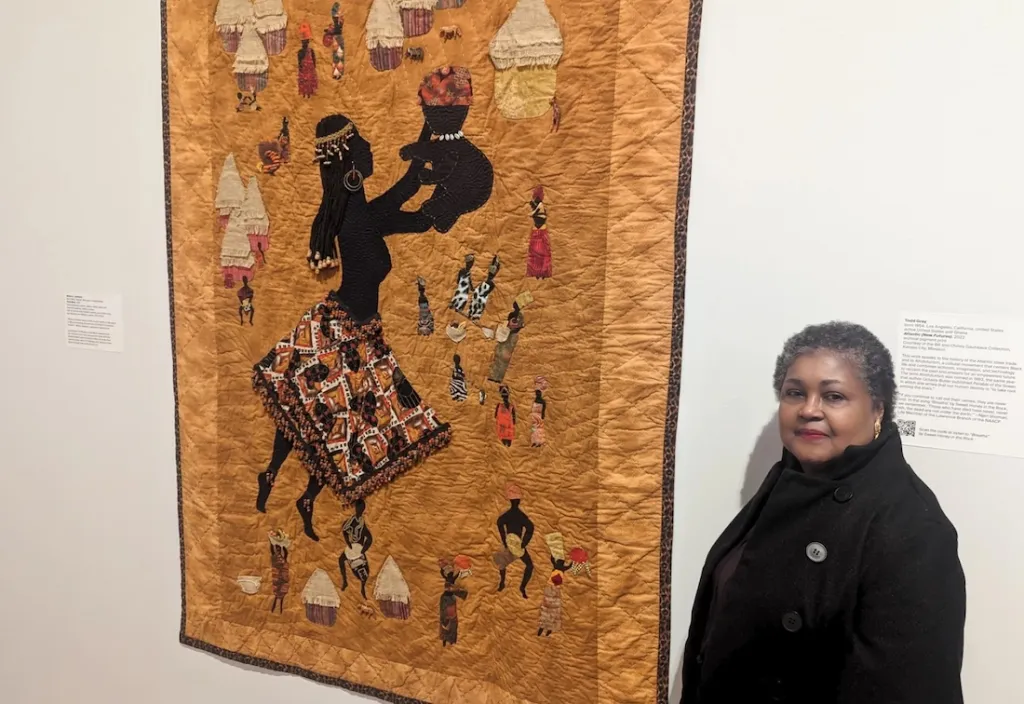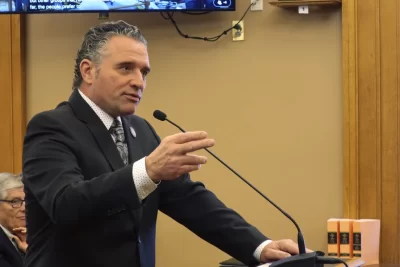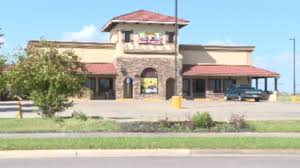
Marla Jackson grew up in the shadow of Jim Crow segregation and Emmett Till’s 1955 murder. The 71-year-old says the story of Till, killed by vigilantes in Mississippi for allegedly whistling at a white woman, is still relevant.
“It’s the same stories now,” says Jackson, a renowned quilter and textile artist. “Only thing changed is social media.”
“They’re just shooting your babies right in front of us, and one calling for his mama,” she says, referring to George Floyd, who could be heard on video in 2020 calling for his mother while being asphyxiated by a Minneapolis police officer.
The high-profile killings loom large in a pair of exhibits now on view at the Spencer Museum of Art on the University of Kansas’ Lawrence campus.
Jacksons’ artwork, and that of 13 more contemporary Black artists, is featured in the “One History, Two Versions” exhibit. The show plays companion to another exhibition that’s traveled across the country since opening in the fall of 2022, “Emmett Till & Mamie Till-Mobley: Let the World See.” Both have been open since February.
The Till exhibit, in part, sets about humanizing the historical figure’s boyhood existence, and conveying the depths of a mother’s love for her son, even in senseless tragedy.
The complimentary exhibit draws on themes of Till’s story with a singular focus: drawing a direct line from Till’s murder to Trayvon Martin and beyond.
In Jackson’s piece, titled “First Born,” a mother in African-themed clothing is seen holding her child upwards, towards the sun.
“It is such an honor and privilege,” says Jackson, who owns Marla Quilts Inc. in Lawrence and works with a network of quilters across North America.
Artist Nedra Bonds is a Kansas City quilter whose work is also included in “One History, Two Versions.”
Bonds, now 75, was 7 when Emmett Till was lynched. She says that moment is forever etched in her mind.
“I remember seeing that photograph of Emmett Till when they pulled him out of the water, and his mom had the open casket in Chicago,” says Bonds, who was born and raised in the historic Quindaro neighborhood of Kansas City, Kansas.
Bonds is best known for creating the “The Quindaro Quilt” in 1988. The 4-by-6-foot protest quilt depicts the neighborhood’s history in abolitionism and the Underground Railroad.
Like Jackson, Bonds’ work in the KU exhibit depicts the bond between Black mother and child. Her “A Kiss from the Ancestor” piece uses beads as Bantu knots in the head of an elder, who is kissing a young family member on the forehead.
As a retired educator in early childhood education and art at Pembroke Hill School and Operation Breakthrough, Bonds sees the importance of passing down the stories from one generation to the next.
“It’s important for young people to know, especially now, when governments don’t want us to know the true history of Black people in this country,” she says. “So the way that I let people know is through quilts.”







